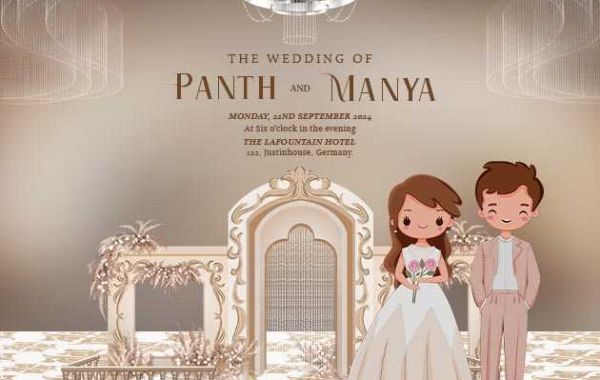Introduction
Card invitation designs are more than just functional—they’re a glimpse into the event ahead, setting expectations and generating excitement. Whether you're hosting a wedding, a birthday party, or a corporate event, your invitation is the first impression. So, how do you craft one that stands out? Let’s explore the ins and outs of creating the perfect card invitation.
The Significance of Card Invitations
Card invitations hold a special place in our hearts and traditions. They’re tangible, memorable, and often become keepsakes. Unlike digital invites, they offer a personal touch that’s hard to replicate. They also serve as a physical reminder of your event, often displayed on fridges or pinboards.
Evolution from Traditional to Modern Invitations
Traditionally, card invitations were straightforward and formal. Today, they’ve evolved to include a range of styles—from minimalist and modern to elaborate and vintage. This evolution allows for more creativity, enabling you to express your unique style and set the right tone for your event.
Understanding Your Invitation Needs
Identifying the Occasion
The type of event you’re hosting will significantly influence your invitation design. Let’s break down some common occasions:
Weddings
Wedding invitations are often the most elaborate, featuring multiple inserts and luxurious materials. They set the tone for the entire wedding, from the ceremony to the reception.
Birthdays
Birthday invitations can be playful and vibrant. They reflect the theme of the party and give guests a hint of the fun that awaits.
Corporate Events
Corporate invitations tend to be more formal and straightforward, focusing on clarity and professionalism.
Setting the Invitation Tone
Decide whether your event is formal or informal. This will guide your design choices, from the wording to the visual elements.
Formal vs. Informal
Formal invitations typically use traditional fonts, structured layouts, and classic colors. Informal invitations can be more relaxed, with playful fonts, bright colors, and creative layouts.
Themed Invitations
If your event has a theme, incorporate it into your invitation. This helps set expectations and builds excitement among your guests.
Design Essentials
Choosing the Right Card Stock
The quality of the card stock you choose will affect the overall feel of your invitation.
Thickness and Texture
Thicker card stock feels more luxurious and is more durable. Texture can add a tactile element that enhances the invitation’s appeal.
Eco-Friendly Options
Consider using recycled or sustainably sourced paper. It’s a great way to reduce your environmental impact without sacrificing style.
Selecting a Color Palette
Your color palette should complement your event’s theme and season.
Matching Event Colors
If your event has a specific color scheme, make sure your invitations reflect this. Consistency helps tie everything together.
Seasonal Color Trends
For example, pastel colors are perfect for spring events, while rich, deep tones are ideal for fall and winter.
Click here: Business grand opening invitation
Typography Matters
Choosing the right fonts is crucial for readability and style.
Font Pairings
Pair a decorative font with a simpler one to create a balanced look. For example, combine a script font for headings with a sans-serif font for body text.
Readability Concerns
Ensure your text is easy to read. Avoid overly intricate fonts for the main body of text, and use appropriate sizes.
Incorporating Visual Elements
Use of Graphics and Images
Graphics and images can bring your invitation to life.
Illustrations
Custom illustrations can add a unique, personal touch. They can depict elements related to your event, such as flowers for a garden party or balloons for a birthday.
Photographs
Include photographs to personalize your invitation further. This works well for events like weddings and milestone birthdays.
Decorative Features
Add decorative features to enhance the visual appeal of your invitation.
Borders and Patterns
Borders can frame your text and images, adding a sense of structure. Patterns can add texture and interest without overwhelming the design.
Embossing and Foil Stamping
These techniques add a touch of luxury. Embossing creates a raised effect, while foil stamping adds metallic accents.
Adding Personal Touches
Incorporate elements that reflect your personality or the theme of your event.
Monograms
Monograms are a classic way to add a personal touch. They work well for formal events like weddings.
Quotes and Sayings
Including a favorite quote or saying can make your invitation more meaningful. Choose something that resonates with the occasion or your relationship with the guests.
Crafting the Perfect Message
Essential Information to Include
Ensure all necessary details are clear and concise:
- Date, Time, and Location: Be precise and provide any additional details guests might need, like directions.
- RSVP Details: Include a way for guests to respond, whether it's a phone number, email, or online form.
Wording Tips
Your wording should match the tone of your event.
Formal Invitations
Use traditional language and structure. For example, “The honor of your presence is requested at the marriage of...”
Casual Invitations
Feel free to be more relaxed and conversational. For example, “Join us for a fun-filled birthday bash...”
Assembly and Presentation
Invitation Layout
The layout of your invitation affects how it’s perceived and read.
Single Panel
Simple and straightforward, single-panel invitations are ideal for less formal events or when you want to keep things minimal.
Folded Cards
Folded cards offer more space and can create a sense of anticipation as guests open them.
Envelopes and Seals
The envelope is the first thing your guests will see, so make it count.
Envelope Liners
Liners add an extra layer of elegance and can incorporate your color scheme or patterns.
Wax Seals
Wax seals give your invitations a classic, sophisticated look. They can be personalized with your monogram or an emblem related to your event.
Packaging Ideas
How you package your invitations can make a big impact.
Boxes and Ribbons
Consider using a box or adding a ribbon for a luxurious touch. This is particularly effective for formal events or when you want to make a strong impression.
Unique Delivery Options
For a unique twist, hand-deliver your invitations or use creative packaging like miniature mailboxes or themed containers.
Digital vs. Physical Invitations
Pros and Cons of Each
- Digital Invitations: Easy to send and track, eco-friendly, and cost-effective. However, they might lack the personal touch and elegance of a physical card.
- Physical Invitations: Tangible and memorable, often perceived as more thoughtful and personal. They can be more expensive and require more time to design, print, and send.








